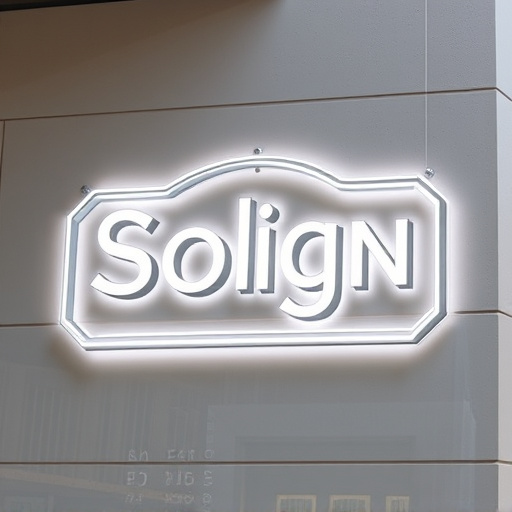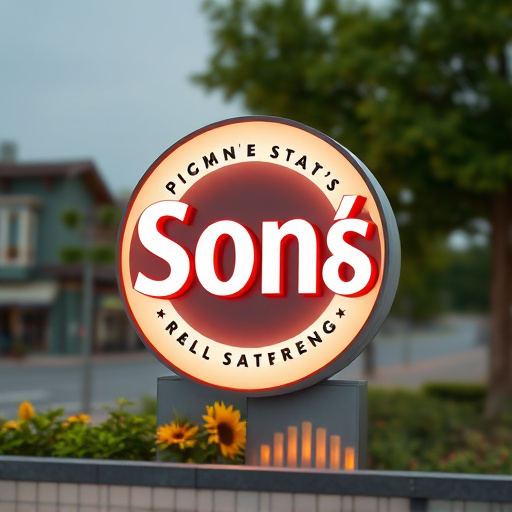Protecting Your High Gloss Finish: Scratches Be Gone

The high gloss finish, though aesthetically pleasing, is susceptible to scratches and scuffs due to…….
Welcome to an in-depth exploration of ‘High Gloss Finish’—a term that has captured the attention of various industries, from manufacturing and design to politics and economics. This article aims to dissect this concept, revealing its intricate details and vast implications worldwide. From its historical roots to cutting-edge technological applications, we will navigate the significance of high gloss finish in shaping modern aesthetics and functionality. Prepare to delve into a world where shine transcends mere appearance, influencing markets, technologies, and societal trends.
Definition: High Gloss Finish (HGF) refers to a surface treatment that achieves an exceptionally smooth, reflective, and glossy finish. It is characterized by its ability to reflect light, creating a visually stunning and touchable texture. HGF is not merely about brightness; it involves a complex interplay of chemical compounds, application techniques, and post-treatment processes.
Core Components: The primary components include specialized coatings, resins, and topcoats designed to withstand various environmental factors while maintaining their glossy appearance. These formulations often contain unique additives that resist scratches, stains, and degradation from UV light, ensuring longevity and aesthetics.
Historical Context: The pursuit of a high-gloss finish dates back centuries, with early attempts involving natural resins and waxes used by ancient civilizations to enhance the beauty of wood and metal artifacts. However, modern HGF as we know it today emerged during the industrial revolution when advancements in chemistry and manufacturing techniques allowed for the creation of synthetic coatings with superior properties.
Significance: High Gloss Finish plays a pivotal role in enhancing product aesthetics, adding value to various consumer goods, furniture, automotive components, and architectural surfaces. Its impact is multifaceted:
High Gloss Finish has transcended geographical boundaries, leaving its mark on various industries globally. Here’s a glimpse into its international influence:
| Region | Impact and Trends |
|---|---|
| North America | The automotive industry in the US and Canada is a significant adopter of HGF, particularly for car interiors and exteriors. There’s a growing trend towards eco-friendly coatings, with manufacturers exploring water-based and low-VOC (Volatile Organic Compound) alternatives. |
| Europe | European furniture manufacturers lead in HGF applications, offering a wide array of glossy finishes for both residential and commercial spaces. The region’s stringent environmental regulations have spurred the development of sustainable HGF options. |
| Asia-Pacific | China and Japan are prominent centers for HGF innovation, with advancements in coating technologies. In South Korea, HGF is widely used in electronic device design, enhancing their aesthetic appeal. The region’s dynamic consumer markets drive trends towards unique finishes and personalized designs. |
| Middle East & Africa | This region sees significant HGF usage in luxury interior design, particularly in high-end real estate projects. The growing trend of glitzy, extravagant spaces pushes the boundaries of HGF applications. |
| Latin America | Brazil and Mexico are witnessing a surge in HGF adoption across various sectors, from automotive to packaging, driven by a rising middle class and increasing demand for visually appealing products. |
These trends highlight how high gloss finish adapts to local markets while maintaining its global appeal. As the world becomes more interconnected, the exchange of ideas and technologies is fostering a vibrant, diverse HGF landscape.
The economic implications of High Gloss Finish are substantial, impacting various sectors in profound ways.
Market Dynamics: The global HGF market is experiencing steady growth, driven by increasing demand from industries like automotive, furniture, electronics, and construction. According to a 2021 report by Market Research Future (MRFR), the market is projected to reach USD 14.5 billion by 2027, growing at a CAGR of 6.7% during the forecast period (2020-2027). This growth is attributed to rising consumer preferences for aesthetically pleasing products and the increasing use of HGF in sustainable applications.
Investment Patterns: Major investments are being made in R&D to develop advanced HGF technologies, particularly eco-friendly alternatives. Companies are also expanding production capacities to meet the growing global demand. For instance, Asia-Pacific coatings manufacturers have been investing heavily in developing high-performance, low-VOC HGF options.
Economic Impact: The economic value of HGF extends beyond market size:
The realm of High Gloss Finish is a dynamic arena for technological innovations that continually push the boundaries of what’s possible. Here are some key advancements:
These technological advancements not only improve the capabilities of HGF but also open doors to novel applications, ensuring its future relevance and sustainability.
The development and application of High Gloss Finish are influenced by various policies and regulations that vary across jurisdictions. These guidelines ensure consumer safety, environmental protection, and ethical manufacturing practices.
Environmental Regulations: Many countries have implemented strict rules regarding VOC emissions from coatings, pushing manufacturers to adopt low-VOC or water-based HGF alternatives. The European Union’s REACH (Registration, Evaluation, Authorization, and Restriction of Chemicals) regulation is a prime example, influencing global coating formulations.
Product Safety Standards: Organizations like UL (Underwriters Laboratories) and TÜV SÜD set safety standards for HGF-coated products, ensuring they meet durability, toxicity, and fire-retardant requirements.
Intellectual Property Rights: Patents play a crucial role in protecting innovative HGF technologies, fostering competition while encouraging further research and development.
Trade Policies: International trade agreements impact the flow of HGF products across borders, influencing import/export duties and market access. These policies can either facilitate global trade or create barriers, shaping the competitive landscape.
Despite its myriad advantages, High Gloss Finish faces several challenges and criticisms that demand attention and innovative solutions.
Environmental Concerns: The environmental impact of traditional HGFs, particularly regarding VOC emissions and disposal of used coatings, has raised alarms. Efforts to address these issues include developing eco-friendly formulations, implementing better waste management practices, and promoting recycling initiatives for HGF materials.
Health Risks: Some HGF components may pose health risks, especially during manufacturing or application processes. Proper ventilation systems and safety protocols are essential to mitigate these hazards. Ongoing research aims to identify safer alternatives while maintaining performance standards.
Cost and Accessibility: High-performance HGFs can be more expensive than traditional options, making them less accessible for smaller businesses and emerging markets. This disparity could hinder innovation and limit the benefits of HGF to a select few industries or regions.
Sustainability in Practice: While there’s a growing focus on sustainable HGFs, ensuring these products meet performance criteria while minimizing environmental impact remains a challenge. Balancing aesthetics, durability, and eco-friendliness is an ongoing pursuit for manufacturers.
The luxury car market in Europe showcases the transformative power of HGF. Premium brands like Mercedes-Benz and BMW have embraced HGF for interior trim, dashboards, and exterior body panels. This finish enhances the sense of opulence and craftsmanship associated with these vehicles, justifying their premium pricing.
Lessons Learned:
In the US, food and beverage companies are adopting HGF for eco-friendly packaging solutions. A leading snack manufacturer developed a fully recyclable HGF paper coating that maintains product freshness while appealing to environmentally conscious consumers.
Impact:
A tech startup in Asia created interactive HGF-coated surfaces for smart home devices, allowing users to control lighting, temperature, and entertainment systems with simple touch gestures.
Technological Integration:
The future of High Gloss Finish promises exciting possibilities as technologies evolve and global trends emerge. Here’s a glimpse into potential growth areas:
High Gloss Finish is more than just a shiny exterior; it represents a complex interplay of science, technology, and aesthetics that has captivated industries worldwide. From its historical roots to modern applications, this finish has evolved to meet diverse needs, from enhancing product appeal to driving sustainable practices. As we peer into the future, HGF’s potential remains vast, offering solutions and opportunities across sectors.
The global impact of HGF is a testament to its versatility and importance, shaping industries, influencing trends, and fostering innovation. By addressing challenges and embracing technological advancements, this finish will continue to leave its radiant mark on our world. As the story of High Gloss Finish unfolds, it serves as a reminder that sometimes, a little shine can go a long way.
Q: Is High Gloss Finish suitable for all types of materials?
A: While HGF is versatile, not all materials respond equally to coating. Plastics, metals, and certain types of wood typically yield the best results due to their ability to withstand the coating process and maintain a smooth finish.
Q: How does HGF impact product durability?
A: Advanced HGF coatings provide excellent durability by creating a protective barrier against wear, tear, and environmental factors. This results in prolonged product lifespans, especially in demanding applications like automotive interiors and exterior surfaces.
Q: Are there any health concerns associated with HGF?
A: When applied correctly and using approved formulations, HGF products pose minimal health risks. However, some components may require ventilation during application to prevent inhalation of vapors. Always follow safety guidelines provided by manufacturers.
Q: Can HGF be recycled or reused?
A: Some HGF materials can be recycled through specialized programs, but it varies depending on the composition. Water-based and solvent-free coatings have higher recyclability rates. Reusing HGF products is also possible in certain cases, promoting sustainability.
Q: How does HGF contribute to sustainable practices?
A: The development of eco-friendly HGF alternatives, such as water-based coatings with low VOCs, reduces environmental impact. These innovations help minimize air pollution, conserve resources, and promote recycling, aligning with global sustainability goals.

The high gloss finish, though aesthetically pleasing, is susceptible to scratches and scuffs due to…….

Achieving a high gloss finish on vehicles requires careful selection of tools, techniques, and mater…….

Meticulously prepare surface for high gloss finish by assessing and addressing scratches, using scra…….

Ceramic coating and high gloss finish offer a powerful combination for surface protection and enhanc…….

Achieving a high gloss finish on vehicles involves understanding surface science, using suitable pro…….

The high gloss finish is a luxurious automotive aesthetic known for its mirror-like reflectivity and…….

Polishing compounds, with varying grit sizes, are crucial for achieving and maintaining a high gloss…….